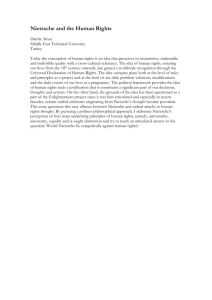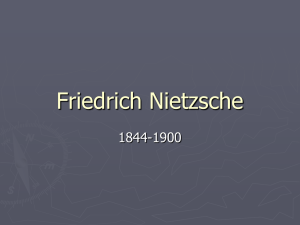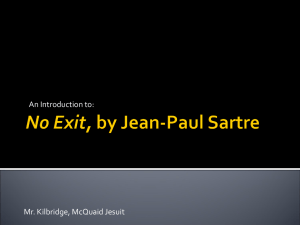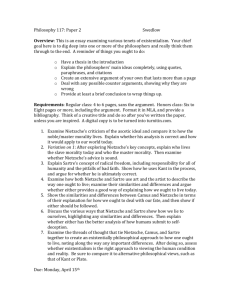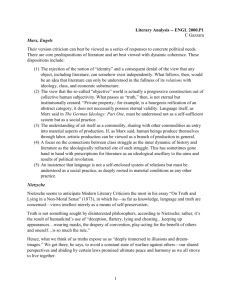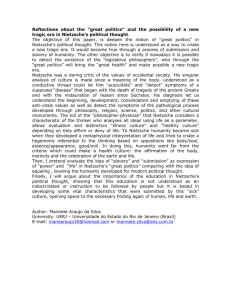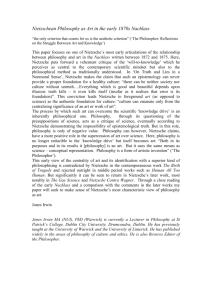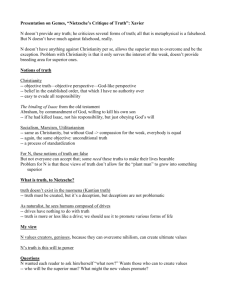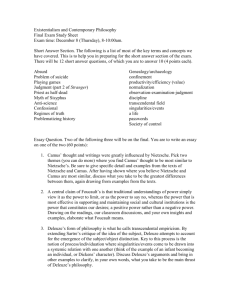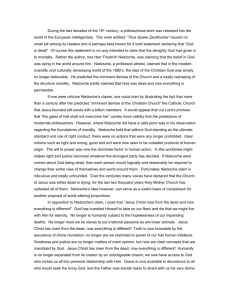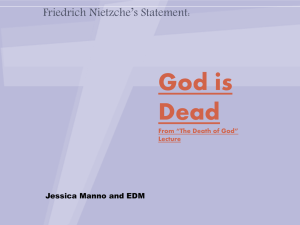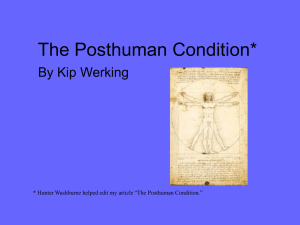Nietzsche`s conception of freedom is notoriously thorny
advertisement
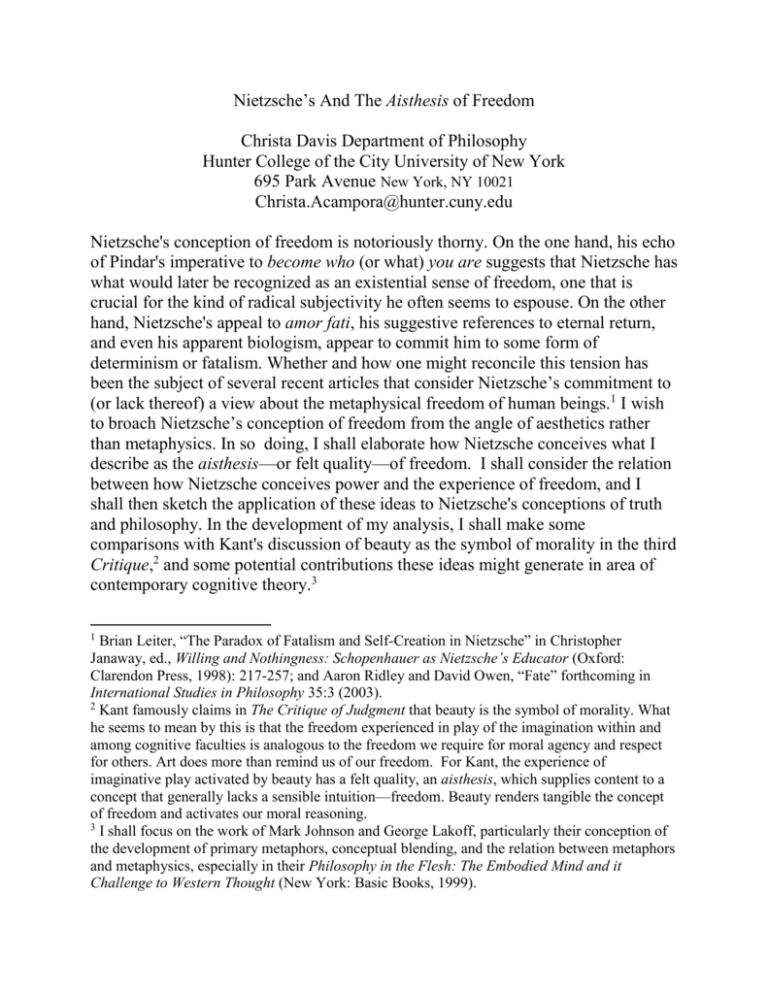
Nietzsche’s And The Aisthesis of Freedom Christa Davis Department of Philosophy Hunter College of the City University of New York 695 Park Avenue New York, NY 10021 Christa.Acampora@hunter.cuny.edu Nietzsche's conception of freedom is notoriously thorny. On the one hand, his echo of Pindar's imperative to become who (or what) you are suggests that Nietzsche has what would later be recognized as an existential sense of freedom, one that is crucial for the kind of radical subjectivity he often seems to espouse. On the other hand, Nietzsche's appeal to amor fati, his suggestive references to eternal return, and even his apparent biologism, appear to commit him to some form of determinism or fatalism. Whether and how one might reconcile this tension has been the subject of several recent articles that consider Nietzsche’s commitment to (or lack thereof) a view about the metaphysical freedom of human beings.1 I wish to broach Nietzsche’s conception of freedom from the angle of aesthetics rather than metaphysics. In so doing, I shall elaborate how Nietzsche conceives what I describe as the aisthesis—or felt quality—of freedom. I shall consider the relation between how Nietzsche conceives power and the experience of freedom, and I shall then sketch the application of these ideas to Nietzsche's conceptions of truth and philosophy. In the development of my analysis, I shall make some comparisons with Kant's discussion of beauty as the symbol of morality in the third Critique,2 and some potential contributions these ideas might generate in area of contemporary cognitive theory.3 1 Brian Leiter, “The Paradox of Fatalism and Self-Creation in Nietzsche” in Christopher Janaway, ed., Willing and Nothingness: Schopenhauer as Nietzsche’s Educator (Oxford: Clarendon Press, 1998): 217-257; and Aaron Ridley and David Owen, “Fate” forthcoming in International Studies in Philosophy 35:3 (2003). 2 Kant famously claims in The Critique of Judgment that beauty is the symbol of morality. What he seems to mean by this is that the freedom experienced in play of the imagination within and among cognitive faculties is analogous to the freedom we require for moral agency and respect for others. Art does more than remind us of our freedom. For Kant, the experience of imaginative play activated by beauty has a felt quality, an aisthesis, which supplies content to a concept that generally lacks a sensible intuition—freedom. Beauty renders tangible the concept of freedom and activates our moral reasoning. 3 I shall focus on the work of Mark Johnson and George Lakoff, particularly their conception of the development of primary metaphors, conceptual blending, and the relation between metaphors and metaphysics, especially in their Philosophy in the Flesh: The Embodied Mind and it Challenge to Western Thought (New York: Basic Books, 1999).
